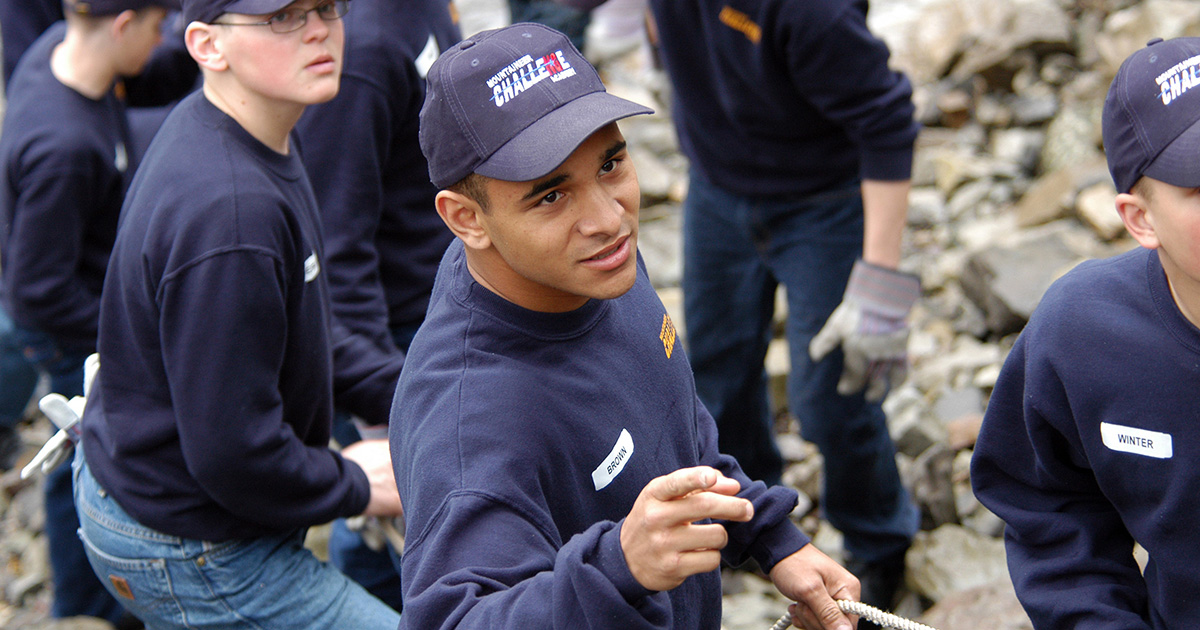Evaluation of the National Guard Youth ChalleNGe Program

Overview
An estimated five million Americans between the ages of 16 and 24 are both out of school and unemployed. These youth are more likely than those who work or complete a degree to face long-term unemployment, permanent school dropout, welfare dependence, and criminal involvement and incarceration. The National Guard Youth ChalleNGe Program was developed in the early 1990s to improve the employment and life prospects of youth, ages 16 to 18, who have dropped out of high school and have not found a place in the labor market. It currently operates in 27 states and Puerto Rico, and has served more than 100,000 youth over its history.
ChalleNGe was designed on the premise that programs for at-risk youth must provide comprehensive, long-term instruction and assistance. It builds on a positive youth development model and includes a wide array of activities designed to strengthen young people’s preparedness for work and adult responsibilities. Data from the states in which ChalleNGe operates suggest that the program has strong potential to make a positive difference in participants’ lives.
MDRC, in partnership with the MacArthur Foundation Research Network on the Transition to Adulthood, conducted an evaluation of ChalleNGe study in 10 ChalleNGe sites found that, after three years, participants were more likely than their control group counterparts to have obtained a GED or high school diploma, to have earned college credits, and to be working. Their earnings are also 20 percent higher.
To learn more about enrolling in the ChalleNGe program, visit the National Guard Youth Challenge website.
Additional Project Details
Agenda, Scope, and Goals
ChalleNGe participants engage in a five-month, intensive residential program, followed by a second, nonresidential, year-long phase. State programs are adapted to suit local circumstances, but all programs include eight core components:
- Education: Participants must focus on academic skill-building and set individual goals of academic advancement. Many earn high school diplomas or General Educational Development (GED) certificates.
- Life Coping Skills: Counselors and daily activities assist youth in building skills, such as anger and stress management.
- Leadership/Followership Skills: Each participant is assigned to lead a group of peers at some point in the residential phase. Some programs offer extracurricular groups that provide leadership opportunities.
- Community Service: Youth can take advantage of volunteer opportunities to help others.
- Citizenship: Participants are given opportunities to learn more about their responsibilities as citizens through such activities as running mock campaigns and legislatures and meeting with elected officials.
- Physical Fitness: Youth engage in intensive physical conditioning activities and sports for recreation and team-building.
- Health and Hygiene: Classes and structured group discussions explore the effects of substance abuse and sexually transmitted diseases, as well as the benefits of proper nutrition and hygiene.
- Job Skills: Youth complete career interest and skills inventories, and participate in job-specific skill orientations.
Many states’ programs require participants to provide proof of a specific post-residential activity — a job offer, admission to an educational institution, or military enrollment — before allowing them to graduate from the residential phase. In the nonresidential phase, a trained, program-supported mentor of the participant’s own choosing helps the young person “stay the course” over the next year. The National Mentoring Partnership recently awarded ChalleNGe an Excellence in Mentoring Award for this component’s high quality.
MDRC’s evaluation of the model addressed the following central questions:
- Who is served by ChalleNGe, and why do these youth decide to participate in the program?
- How is the program implemented, and how and why is the basic model adapted to local circumstances?
- How much do youth participate in ChalleNGe services and how does that compare to service engagement for similar youth who are not in the program?
- What are ChalleNGe’s impacts on participants’ education, labor market, positive youth development, risk-taking, and other outcomes, compared with outcomes for the study’s comparison group?
Design, Sites, and Data Sources
Ten state ChalleNGe programs participated in the study. The evaluation used a random assignment research design in which some of the youth who are eligible were placed, at random, into the ChalleNGe program, and others were placed into a comparison group that did not participate in ChalleNGe but had access to other services in the community. (Because there were more applicants than slots in the ChalleNGe program, the use of random assignment did not result in a decrease in the number of youth served.) The experiences and outcomes of the ChalleNGe participants were compared with those of the comparison group. This design is the most reliable way to determine the true effect of the program.
To assess how the programs are implemented, the research team conducted interviews with program administrators, observed program activities, and reviewed documents on program operations. To understand participants’ characteristics, experiences, and outcomes, the team surveyed ChalleNGe and comparison group youth about 9, 21, and 36 months after they entered the study.







